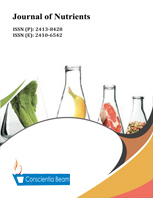Nutritional Values and Potential Health Benefits of Millets- A Review
DOI:
https://doi.org/10.18488/87.v8i1.3176Abstract
In the era of 21st century, rapid urbanisation, climate change, increased population, scarcity of water and increased dry land are the factors responsible for the worldwide agricultural and nutritional challenges. As a widely cultivated popular grain in arid and semiarid regions across the globe, Millets can act as a multifaceted solution to the above global challenges because of their rich vitamins, minerals, phytochemicals and anti-oxidant content. In addition to vitamins, Millets are the rich source of flavanoids such as apigenin, catechin, daisein, orientin, isoorientin, lutolin, quercetin, vitexin, isovitexin, myricetin sponarin, violanthin, lucenin-1, and tricin. Further, the presence of essential amino acids enriches the nutritive potential of Millets. The rich anti-oxidant content in Millets reduces oxidative stress in human and animal models by significantly minimizing Reactive Oxygen Species (ROS) generation. Several bioactive principles in Millets are known to decrease cardiovascular risk, diabetes, ageing and even cancer. However, nutritive and therapeutic potentials of bioactive compounds found in Millets are underexplored and a systematic review encompassing available data in literature is grossly missing. The aim of this review is to compile the recent advances that have been carried out covering nutritional properties, processing technologies and their effects in reducing anti-nutritional factors enhancing nutrient bioavailability along with the potential health benefits of millets. Consumption of various traditional and modern millet based food and studies conducted in examining the bioavailability of minerals after consuming millet based food is also discussed in this review.

